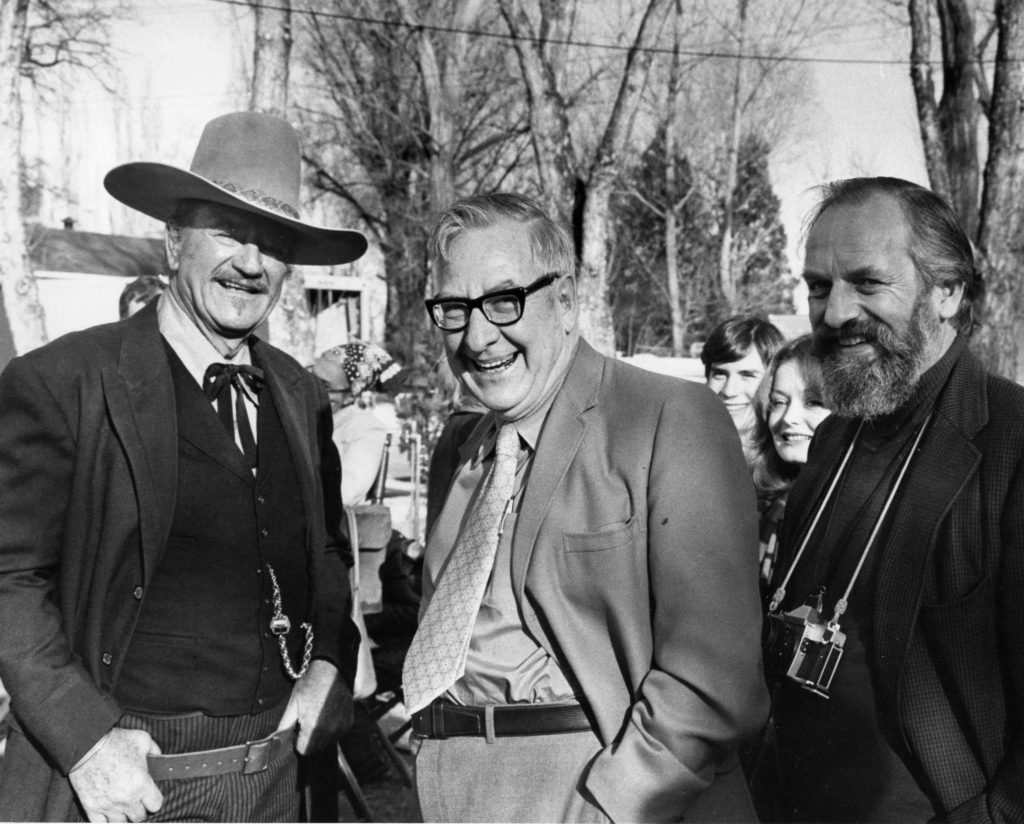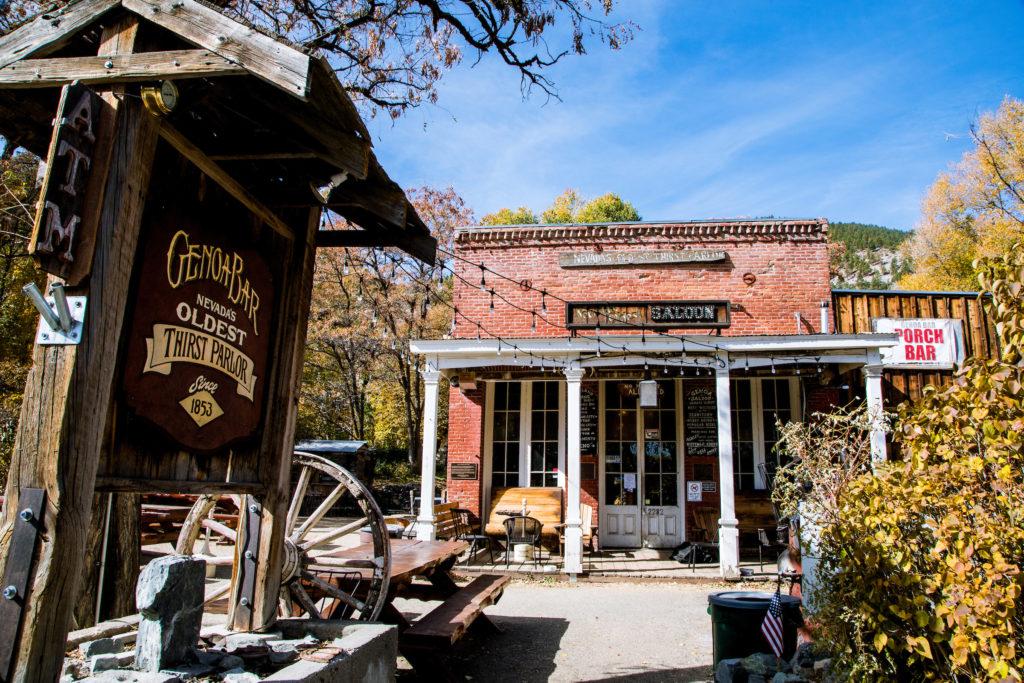
The Journal goes on location with John Wayne to the Silver State in remembrance of the actor’s beloved last film The Shootist.
Written by Jenn Thornton
Abandoned ghost towns, old-timey watering holes, all kinds of art, and landscapes as far as the eye can see, Nevada has it all. Including a little place called Las Vegas and another one called Carson City, where John Wayne, in his last movie role as ailing gunfighter J.B. Books, filmed The Shootist (1976) alongside James Stewart, his co-star in the classic Westerns How the West Was Won (1962) and The Man Who Shot Liberty Valance (1962). Art does indeed imitate life as Duke was, like his character Books, battling cancer at the time.
Carson City marks the primary set piece of The Shootist, and to take the Kit Carson Trail via a self-guided stroll through the city’s historic district, is to be transported back to the 1860s, when officials of the newly minted Nevada Territory settled into charming frontier homes. Take note of the 1914 Krebs-Peterson house on 500 Mountain Street, the boarding house in the film, where a sidewalk plaque marks Wayne’s final role. Given that Nevada has hosted more than a whopping 7,000 movie productions—and who knows how many actors—this is a well-deserved tip of the hat to a larger-than-life legend.
On the first day of filming The Shootist, it is reported that local fans swarmed Mountain Street to get a glimpse of the Duke and his co-stars, including Stewart, Lauren Bacall (who played the widow Bond Rogers) and the man who portrayed her son, a then 21-year-old actor-turned mega-director Ron Howard who, having worked with Wayne in The Shootist, quipped: “‘My most useful acting tip came from my pal John Wayne. ‘Talk low, talk slow, and don’t say too much.’” It certainly worked for Wayne, a man who was always prepared, on-screen and off. As was his custom, the actor had pre-autographed cards ready to hand out on the set of The Shootist.
For two decades Robin Holabird worked as Nevada Film Commission. She also founded the Reno Film Festival and reviewed movies for the state’s National Public Radio flagship station KUNR. For a piece in the Nevada Appeal, Holabird went on record with her thoughts about the film, anointing it the best Western ever made in Nevada. “‘I gave it a good review,’ said Holabird, then a reporter for the Sparks Tribune. “There was real excitement having John Wayne here. It works well as his final film, and that contributes to its classic status.”

The excitement for the film continues to this day, and for those who make the 20-minute drive from Carson City to nearby Genoa, those celebrations often include toasts to the Duke’s cinematic swan song. As Nevada’s oldest permanent settlement—so old there is a Pony Express stop in town (and a marker noting it at the intersection of Genoa Lane and Jackson Valley Road)—Genoa’s real claim to fame is the Genoa Bar & Saloon. Established in 1853, a dust-up of a time, “Nevada’s Oldest Thirst Parlor,” as the saloon fancies itself, is still slinging drinks and welcoming Wayne fans to belly up to the very bar that was featured in The Shootist, which in 2001 was recognized as one of the 10 best Western novels of the 20th century—and one of the 10 best Western films—by the Western Writers of America. A worthy bookend to a legendary Hollywood career.
Photo: (home page) Fremont Street in Las Vegas, Nevada; © Travel Nevada/Sydney Martinez.


